Evolution of body cavity is an important event which further helped the formation of efficient body systems to support growing organs and distribute material. Body cavity also acts as shock absorber and protects the internal organs. Coelom is the main body cavity in most of the animals which is located between the intestinal canal and the body wall.
In general, zygote undergoes rapid cell divisions called as Cleavage to produce a compact mass of cells called Morula. The different cells derived from the cleavage are called as blastomeres. Cleavage ends with the formation of Blastula. As the cleavage proceeds, the number of blastomeres increases and cells of blastula are arranged into a hollow ball like structure.
The central cavity of blastula is called as blastocoel or segmentation cavity or primary body cavity. Invagination of the cells at one end of the blastula results in the formation of Gastrula.
The open cavity of gastrula lined by endoderm is called Archenteron or primitive gut. Its opening is called as Blastopore. The outer layer of gastrula is the ectoderm and the inner layer is called as endoderm. And the cavity between the two layers is Blastocoel.
Members of Radiata are diploblastic with ectoderm and endoderm. But Bilaterians are triploblastic with a third germ layer called mesoderm which arises between ectoderm and endoderm. Mesoderm is solid but has loosely organized tissue called mesenchyme.
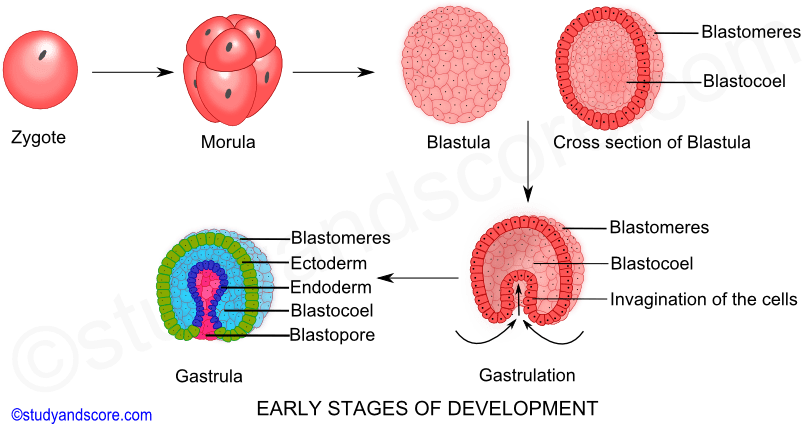
Coelom in Greek language means a hollow cavity. It is a fluid-filled cavity between alimentary canal and body wall. It is lined on all sides by mesoderm. The peritoneal cavity of abdomen is also a part of coelom and there are similar spaces around our heart and lungs. The structure and mode of development of coelom differs among different group of animals.
Primitive diploblastic and triploblastic animals have developed only one major body cavity called as the digestive tract. This digestive tract gave many limitations on the body size, development and locomotion of the animals. With the increasing body size, the weight of the animal also increases. This increased body mass puts lot of stress on the body organs during locomotion thereby preventing the formation of effective circulatory system. All these reasons paved way for the evolution of animals by the development of additional body cavity called as the coelom.
The advantages of the coelom are as follows:
There are three structural types of body plans related to the coelom.
Additionally two other types of structural body plans can be observed namely, schizocoelomates and enterocoelomates mainly in higher grade animals. These two are based on the mode of formation of the coelom.
Acoelomates have no coelomic cavity. The space around the internal organs is completely filled by parenchyma. Hence there is no body cavity surrounding the internal organs. Parenchyma restricts the movement of the internal organs. Only a gut, coelenteron or spongocoel exists in these animals and there is no other cavity.
Ex: Flatworms (Platyhelminthes), coelenterates and sponges.
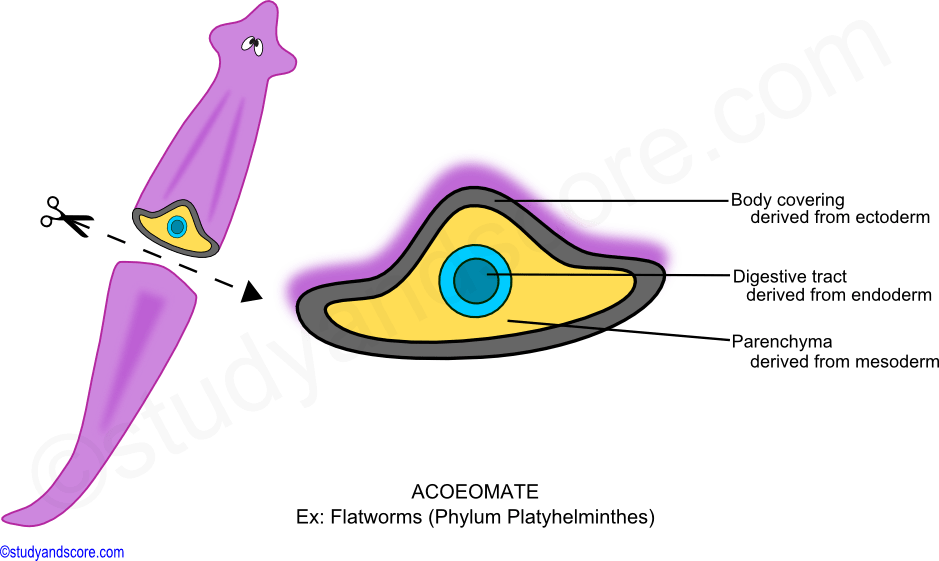
As it is neither formed in mesoderm nor it is lined by mesodermal peritoneum it is called so. The internal organs lie freely within pseudocoelom.
Ex: Round worms (Nemathelminthes) and some minor phyla grouped under Aschelminthes.
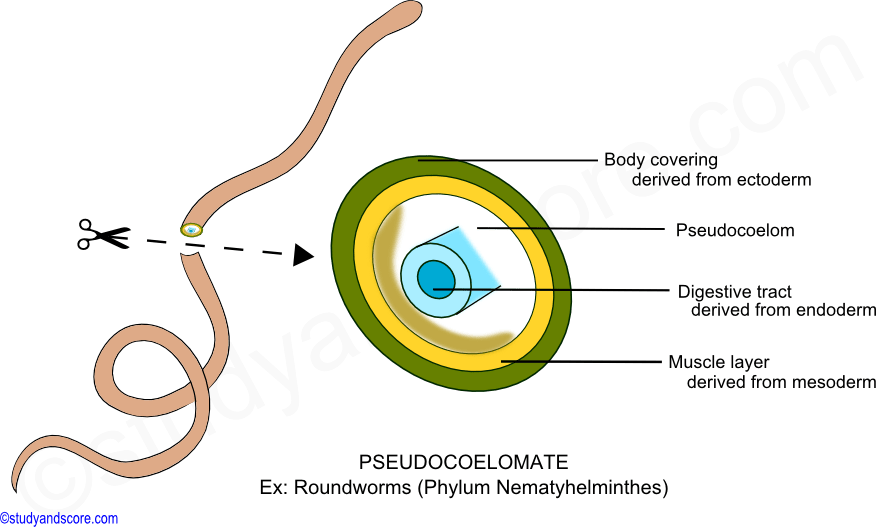
They are true coelomates in which the coelom is lined both inside the body wall and around the gut by mesoderm. The coelom is lined by the mesodermal epithelium called as peritoneum.
The portion of the epithelium that lines the outer wall of coelom is called as parietal/somatic peritoneum. The portion of the epithelium that lines the inner wall of coelom is called as visceral/splanchnic epithelium. Animals with a true coelom also have mesenteries, which suspend the body organs within the coelom.
Ex: Annelids, Arthropods, Mollusks, Echinoderms and Chordates
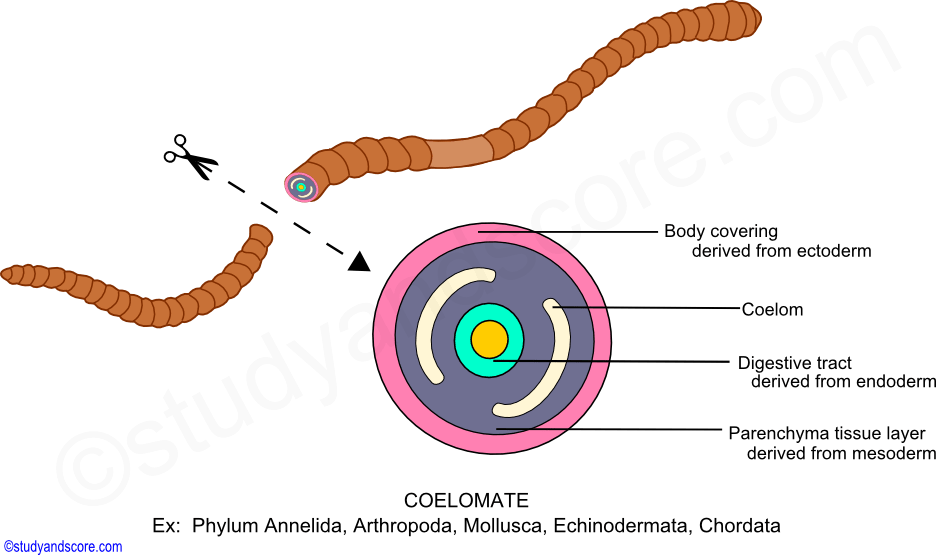
Based on the mode of formation of coelom, coelomates are classified into the following types:
They are true coelomates in which the body cavity originates by splitting of mesodermal tissue at the time of gastrulation. This method of coelom formation is called schizocoelous (Gr. schizo = split), and occurs in animals like annelids, arthropods and mollusks. Sometimes the schizocoelom is filled with blood and is called haemocoel as in arthropods and mollusks.
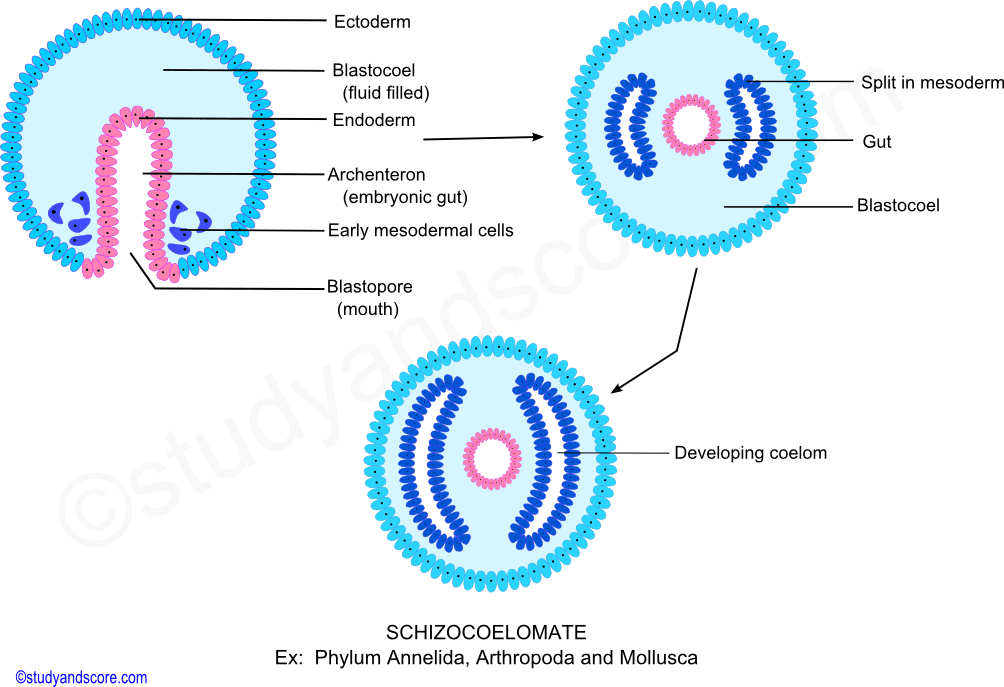
In most deuterostomes, such as chordates and echinoderms, the coelom originates by out-pouching of the archenteron during gastrulation. Each pouch then expands and its mesoderm lines the gut on the inner side and body wall on the outer side. This method of coelom formation is called enterocoelous.
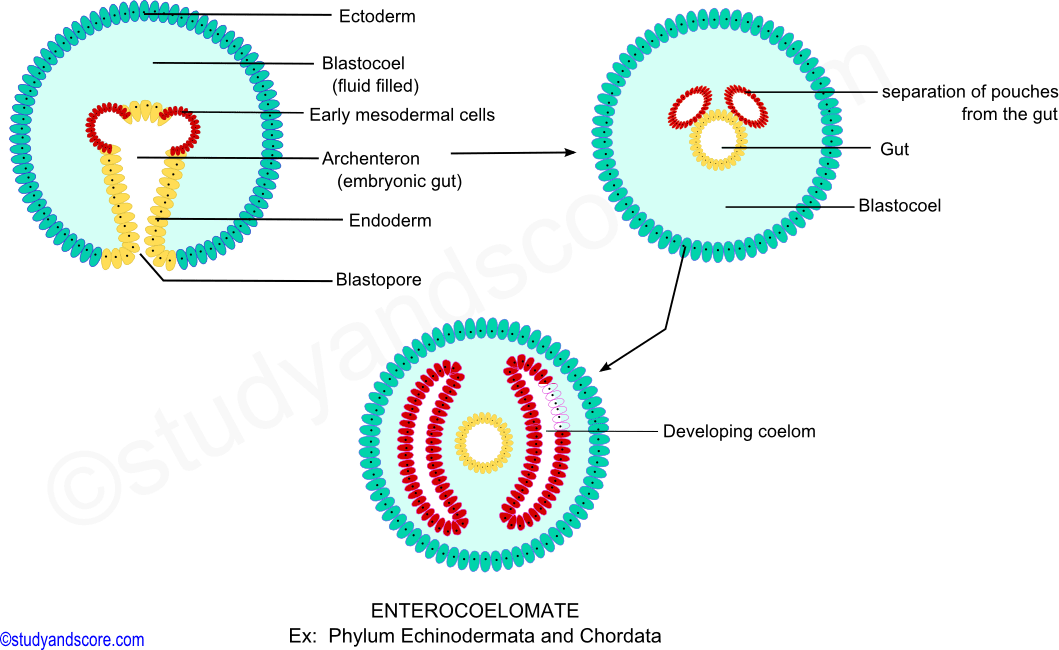

- Share with your friends! -
shivani taak on Jul 03, 2020 at 10:35 am
hiiii, i'm an UPSC CSE aspirant. May i upload my answers here? Will anyone check my answers and give a helpful feedback to me?
Login to post your comment here...
- or with social Account -